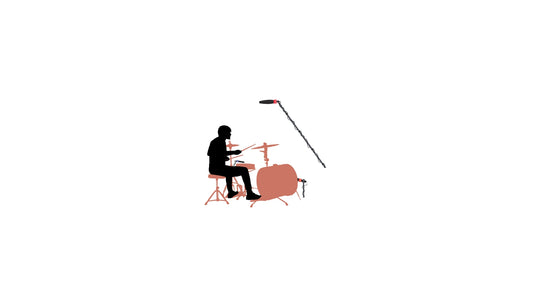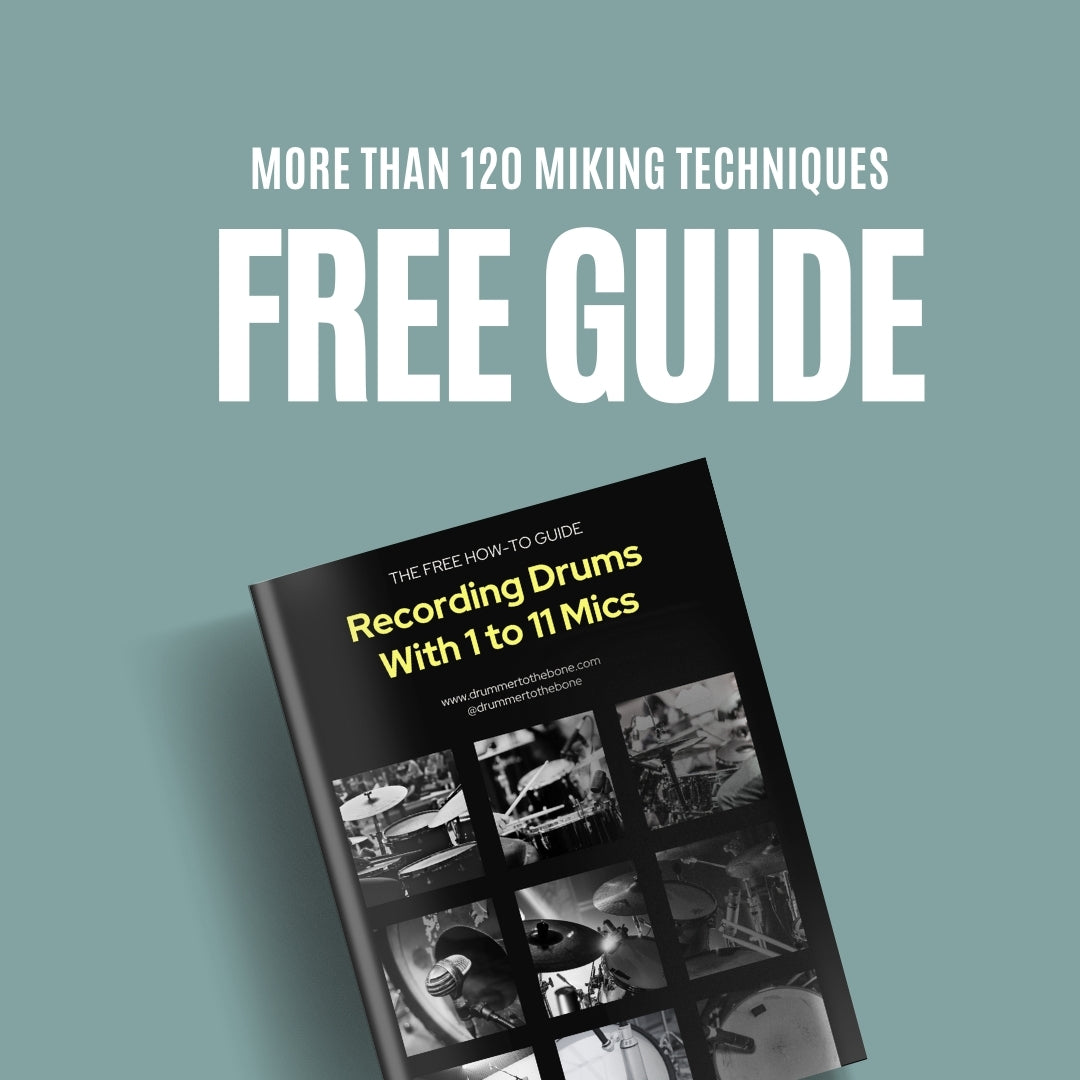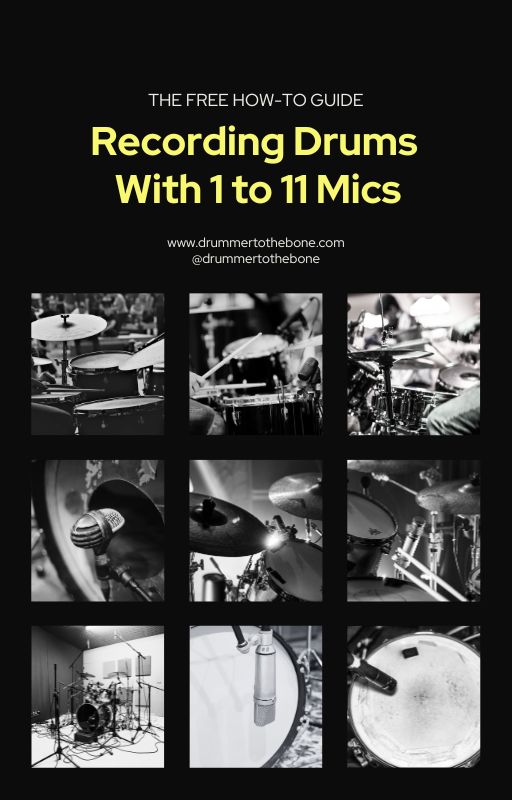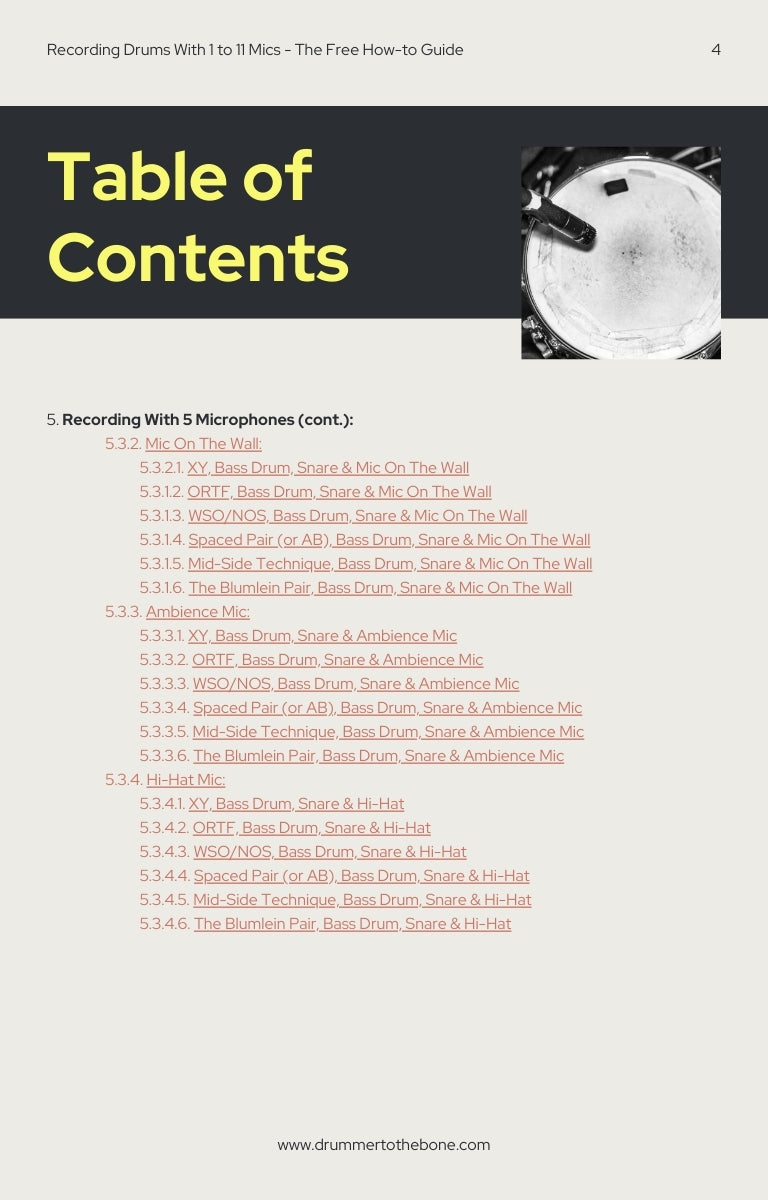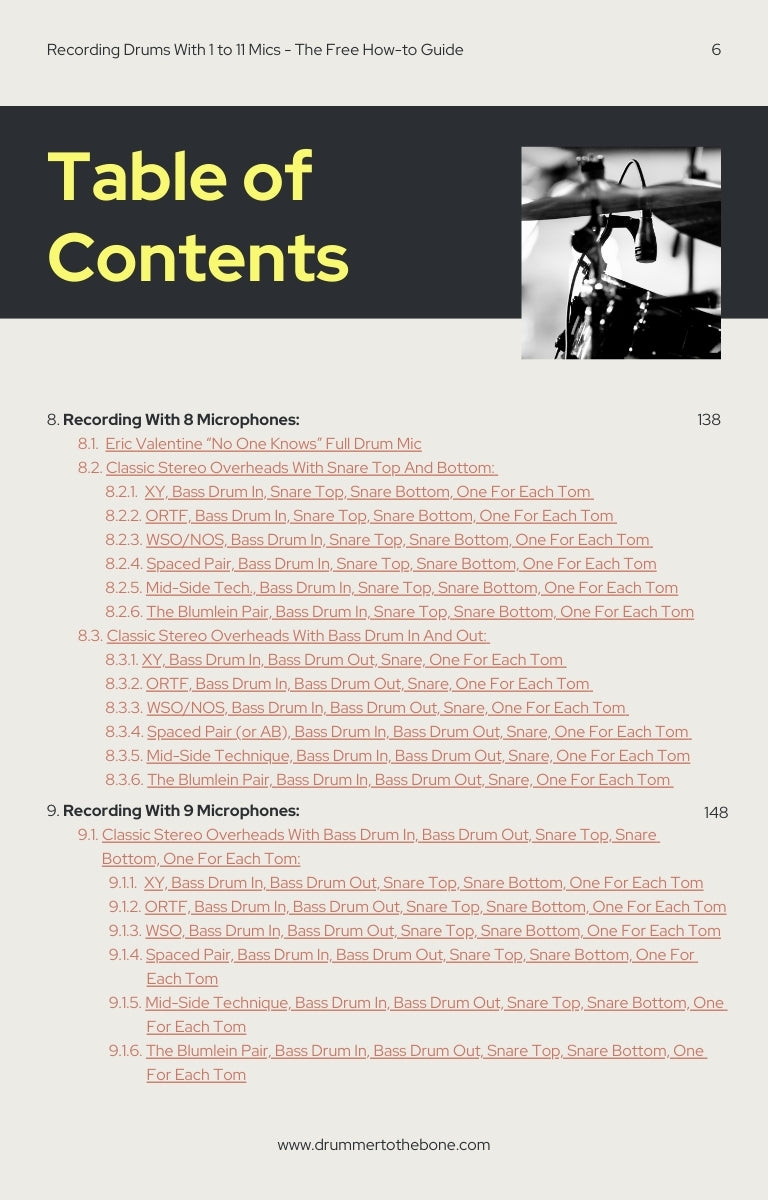Disclaimer: this technique is suitable to record with only 2 mics.
For this technique you’ll need one cardioid condenser microphone as an overhead pointing down at the drum kit. The other microphone is a dynamic microphone (but if you have a condenser it will also work, just make sure you use the dB reduction pad to avoid distortion) and is placed inside the bass drum aimed at the head, or just outside the bass drum.

It’s a very straightforward approach, consider a few things when using this approach:
- Point the overhead towards the snare drum. You’ll want as much snare as possible to counter the bass drum mic.
- Beware of the balance. With the overhead picking up the majority of the kit, if you play your cymbals too loud, you’ll get a lot of noise and poor sound definition. Go easy on the open hi-hat and the crashes.
- You have a potential phase issue here as well:
- Since your bass drum mic will pick up your bass drum hit before the room condenser will, you might end up with a phase issue.
- Put the overhead condenser as close as possible to the drum set. A good rule of thumb is to start at 2 drumsticks in height, just like “Recorderman."
- Place the bass drum mic just outside, or outside the bass drum. If you place it outside the bass drum you might get a bit of ambience but it might blend better. If you put it inside the bass drum, you’ll get a clearer sound but, your potential for phasing is a bit higher.
- Play around with positioning until you get the sound you want. Sometimes, a little bit of “clap” might be what you want.
Pros of this technique:
- It was designed to be used with 2 mics, so it comes in handy in many situations (like rehearsal room or demoing situations).
- Easy to set up, easy to work with.
- Even if you have 2 condensers or 2 dynamic mics, you should be fine. It will do the job.
- It’s a great place to start experimenting with miking drums.
- Good enough tom sound.
- As long as you don’t have any phasing issues, you can put both mics dead center in the mix and you’re good to go.
Cons:
- It will only work in mono. Since both mics have their specific job, you need everything everywhere. So, even though this is a simple approach, if you’re looking for a big sound, it might not be your first choice.



